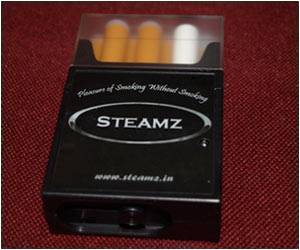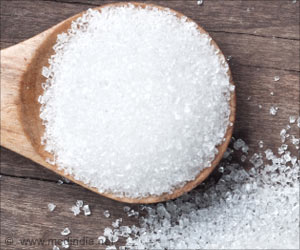
‘P7C3 compound protects mature and newborn neurons in rats, and also improves physical and cognitive outcomes, following stroke.’
Tweet it Now
Researchers from the University of Iowa Carver College of Medicine
and the University of Miami Miller School of Medicine have shown that a
neuroprotective compound tested in rats provides two-pronged protection
for brain cells during stroke and improves physical and cognitive
outcomes in the treated animals.When a stroke interrupts the brain’s blood supply, mature brain cells (neurons) die. In addition, reestablishing blood flow, known as reperfusion, also leads to processes that cause cell death. A part of the brain’s natural response to stroke injury is to increase production of new brain cells in two specific regions (the subgranular zone of the hippocampal dentate gyrus and the subventricular zone of the lateral ventricles), which normally make a smaller number of new brain cells every day. Unfortunately, the vast majority of these newborn cells die within one to two weeks, limiting the benefit of this potential repair process. Minimizing the loss of brain cells is a primary goal for new stroke therapies.
"If we could prevent the mature brain cells from dying that would be beneficial," says Andrew Pieper, professor of psychiatry in the UI Carver College of Medicine and co-senior study author. "But if we could also support or enhance this surge in neurogenesis (birth of new neurons), we might be able to further foster recovery, especially in terms of cognitive function, which is critically dependent on the hippocampus."
Using rats, Pieper and his colleagues Zachary B. Loris and W. Dalton Dietrich, tested the effects of a compound called P7C3-A20 on these two aspects of neuroprotection following ischemic stroke. Blood flow to the rats’ brains was interrupted for 90 minutes and then the blockage was cleared allowing reperfusion. One group of rats was given the P7C3-A20 compound twice daily for seven days following the stroke. P7C3-A20 has previously been shown to prevent brain cell death in other animal models of neurologic injury, including Parkinson’s disease, amyotrophic lateral sclerosis, stress-associated depression, and traumatic brain injury.
In terms of the brain itself, the P7C3-A20 compound reduced loss of brain tissue (atrophy) and increased survival of newborn neurons six weeks after stroke. In addition to the improved survival of both mature and newborn neurons, rats that received the P7C3-A20 compound for seven days after stroke also had better physical and cognitive outcomes than untreated rats. Treated rats had improved balance and coordination one week after stroke, and improved learning and memory one month after stroke. The findings were published recently in the journal Experimental Neurology.
Advertisement
Dietrich, co-senior study author and Scientific Director of The Miami Project to Cure Paralysis, professor of neurological surgery, neurology, biomedical engineering and cell biology at the University of Miami where the studies were conducted, said, "The ability to both protect and repair the injured nervous system has major implications on how we think about improving outcomes in millions of people each year with acute neurological injuries."
Advertisement
Importantly, the study examined the effects of P7C3-A20 on cognitive and physical outcomes well beyond the time of the initial stroke. The sustained physical and cognitive improvement seen in the rats up to one month after the stroke suggests that the P7C3-A20 compound provides a long-term benefit.
"We found we can give the compound in this critical period immediately after the stroke and it has a lasting effect," notes Pieper, who also is a professor of neurology, radiation oncology, and a psychiatrist with the Iowa City Veterans Affairs Health Care System.
In recent years, advances in treatments that break up or remove stroke-causing blood clots have reduced the death rate for stroke and are improving outcomes for patients. The researchers hope that a treatment based on P7C3-A20 used in addition to the clot-clearing therapies might further improve outcomes by protecting brain cells during the traumatic ischemia/reperfusion period.
Source-Eurekalert













